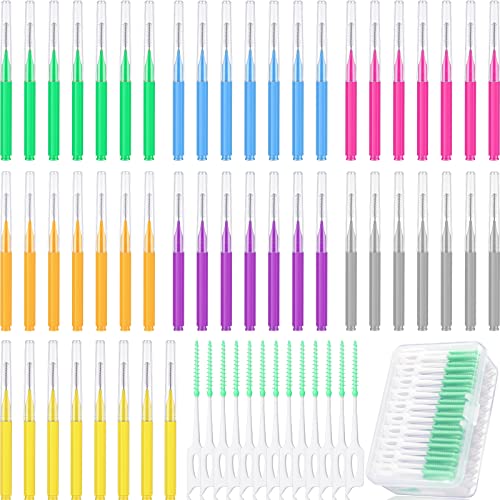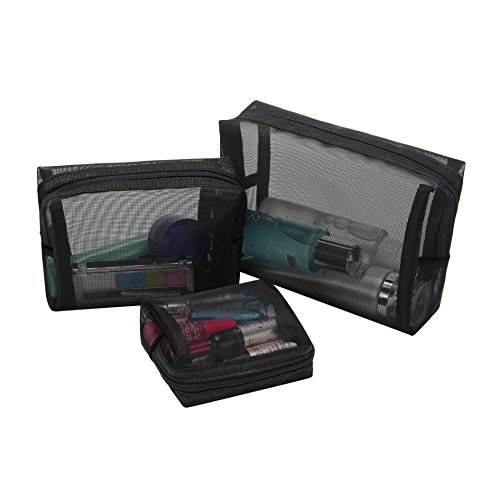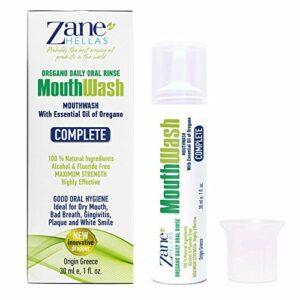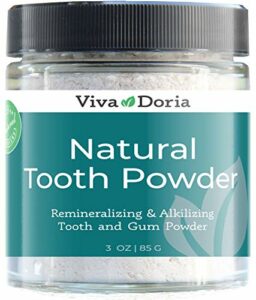We understand that flossing can be a daunting task for those with braces or dental implants. It’s a delicate balance between maintaining the health of your teeth and braces, or implants, while also ensuring a thorough clean. That’s why we’re here to help! In this blog post, we will provide you with valuable flossing tips specifically tailored to people with braces or dental implants. Our goal is to alleviate any concerns or confusion you may have, and empower you to confidently incorporate daily flossing into your oral care routine. So let’s dive in and discover the best flossing techniques for a healthy and happy smile!
Achieve a healthy smile with daily flossing
Why is flossing important with braces or dental implants?
Maintaining good oral hygiene is essential for everyone, but it becomes even more crucial for individuals with braces or dental implants. Flossing plays a significant role in this process. In this blog section, we will explore the specific challenges faced by those with braces or dental implants when it comes to flossing and highlight the importance of regular flossing in these cases.
Flossing Challenges with Braces
Wearing braces can dramatically improve your smile and dental health, but it also makes oral hygiene more challenging. The wires and brackets create spaces where food particles and plaque can easily get trapped, increasing the risk of tooth decay and gum disease. Here are the specific challenges faced by individuals with braces when it comes to flossing:
- Access Difficulties: The presence of wires and brackets makes it difficult to reach between teeth and along the gumline with traditional flossing techniques.
- Time-consuming: Flossing with braces requires more time and effort compared to flossing without braces, as you need to carefully navigate around the wires and brackets.
- Increased Sensitivity: The pressure exerted by flossing can cause temporary discomfort and mild sensitivity due to the braces applying force on the teeth.
Flossing Challenges with Dental Implants
Dental implants are an excellent long-term solution for missing teeth. However, they also require specific care to ensure their longevity and prevent complications such as peri-implantitis. Flossing with dental implants presents its own set of challenges:
- Prosthetic Anatomy: Dental implants consist of a titanium post inserted into the jawbone, an abutment that connects the post to the crown, and the crown itself. These components can create crevices where plaque and bacteria can accumulate if not cleaned properly.
- Gum Health: Flossing around dental implants is crucial to maintain gum health. If bacteria are allowed to build up, it can lead to inflammation, infection, and potential implant failure.
- Risk of Damage: Improper flossing techniques can damage the soft tissue around the implants or cause the implant crown to become loose.
The Importance of Flossing
Despite the challenges, flossing remains a vital part of oral hygiene for individuals with braces or dental implants. Here’s why:
- Prevention of Tooth Decay: Regular flossing removes plaque and debris from hard-to-reach areas, preventing the formation of cavities and the erosion of tooth enamel.
- Gum Disease Prevention: Flossing helps remove plaque along the gumline, reducing the risk of gum disease and inflammation.
- Preservation of Dental Implants: Proper flossing around dental implants removes plaque and bacteria, preventing peri-implantitis and maintaining the longevity of the implants.
- Enhanced Oral Hygiene: Flossing complements brushing by reaching areas that a toothbrush cannot access, ensuring a thorough clean and fresher breath.
Tips for Effective Flossing
To overcome the challenges and maintain good oral hygiene with braces or dental implants, here are some tips for effective flossing:
- Interdental Brushes: Consider using interdental brushes to clean between the wires and brackets of braces or around dental implants.
- Floss Threaders: Floss threaders can help navigate the floss under the wires of braces or around dental implants, making it easier to clean those hard-to-reach areas.
- Water Flossers: Water flossers are an alternative to traditional flossing and can be particularly useful for individuals with braces or dental implants. They use a stream of water to dislodge plaque and food particles from the teeth and gums.
- Regular Dental Check-ups: Remember to schedule regular dental check-ups, as your dentist can provide guidance on proper flossing techniques and ensure your braces or dental implants are in good condition.
By incorporating these tips into your daily oral care routine, you can overcome the challenges of flossing with braces or dental implants and maintain excellent oral hygiene.
Remember, your oral health is important, and proper flossing is an essential component of your overall dental care routine. Don’t neglect it, even if you have braces or dental implants!
Choosing the right flossing tools
Maintaining good oral hygiene is essential for a healthy smile, and flossing plays a crucial role in this routine. However, selecting the right flossing tools can be overwhelming, especially with the wide variety of options available in the market today. Whether you have braces, dental implants, or simply want to improve your flossing technique, we’ve got you covered. In this guide, we’ll explore different flossing tools and provide tips on choosing the most suitable ones for your specific needs.
Floss Threaders: Navigating Flossing with Braces
What are Floss Threaders?
Floss threaders are thin, flexible tools designed to assist individuals with braces in maneuvering floss between their teeth and around orthodontic appliances. They are particularly useful when traditional flossing methods become challenging due to the presence of brackets and wires.
Benefits of Floss Threaders:
- Allows effective flossing by guiding the floss underneath wires and around brackets.
- Helps prevent the accumulation of plaque and food particles in hard-to-reach areas.
- Reduces the risk of gum inflammation and tooth decay during orthodontic treatment.
Tips for Choosing Floss Threaders:
When selecting floss threaders for braces, consider the following:
- Flexibility: Opt for threaders that are flexible enough to navigate around your brackets and wires without causing discomfort.
- Strength: Ensure that the threader is strong enough to withstand the pressure needed to floss effectively.
- Easy Handling: Look for threaders with an ergonomic design that allows for easy grip and maneuverability.
Interdental Brushes: Ideal for Dental Implants and Larger Spaces
What are Interdental Brushes?
Interdental brushes, also known as proxy brushes, are small brushes designed to clean the spaces between teeth and dental implants. They resemble tiny bottle brushes and come in various sizes to suit different interdental gaps.
Benefits of Interdental Brushes:
- Effectively remove plaque and food debris from larger spaces between teeth or implants.
- Help prevent gum disease, bad breath, and dental implant complications.
- Can be used as an alternative or complement to traditional flossing.
Tips for Choosing Interdental Brushes:
Consider the following factors when selecting interdental brushes:
- Size: Choose brushes with bristles that fit snugly into your interdental spaces without causing discomfort or difficulty.
- Flexibility: Opt for brushes with flexible necks that can adapt to the contours of your teeth and implants.
- Bristle Texture: Select brushes with soft, nylon bristles to avoid damaging your gums and natural teeth.
Water Flossers: Versatile and Gentle Cleaning
What are Water Flossers?
Water flossers, also known as oral irrigators, utilize a stream of water to remove plaque and debris from between teeth and along the gumline. They are particularly useful for individuals with braces, dental implants, or those who prefer a gentler flossing method.
Benefits of Water Flossers:
- Provide a gentle and soothing cleaning experience, making them ideal for individuals with sensitive gums.
- Reach areas that traditional flossing may miss, effectively removing plaque and reducing the risk of gum disease.
- Offer versatility with adjustable water pressure settings and interchangeable tips for customized cleaning.
Tips for Choosing Water Flossers:
Consider the following factors when selecting a water flosser:
- Water Pressure Settings: Look for models with adjustable pressure settings to cater to the sensitivity of your gums and specific cleaning needs.
- Tank Capacity: Consider the size of the water tank, ensuring it can hold enough water for a thorough flossing session without frequent refills.
- Tip Compatibility: Check if the water flosser offers a variety of tips, such as orthodontic or implant-specific tips, to cater to your unique requirements.
Proper flossing techniques
Subtitle: Step-by-Step Instructions for Effective and Safe Flossing
Maintaining proper oral hygiene is essential for a healthy smile. While brushing your teeth twice a day is important, it’s equally crucial to incorporate flossing into your daily routine. Flossing helps remove plaque and food particles from between your teeth and along the gumline, preventing gum disease and tooth decay. In this blog post, we will guide you through the step-by-step process of flossing effectively and safely, taking into consideration the presence of braces or dental implants.
Step 1: Choose the Right Floss
Choosing the right floss is the first step towards effective flossing. There are various types of floss available, such as waxed, unwaxed, flavored, and tape floss. Consider your personal preference and any specific dental needs you may have, such as sensitive gums or braces.
Step 2: Proper Hand Positioning
Start by winding the floss around your middle fingers, leaving a gap of about one or two inches to work with. Use your thumbs and index fingers to hold the floss taut, ensuring a firm grip for effective cleaning.
Step 3: Slide the Floss Between Teeth
Gently guide the floss between your teeth using a back-and-forth motion. Be careful not to snap the floss into your gums, as this can cause discomfort or bleeding. Take your time and be thorough, ensuring the floss reaches below the gumline.
Step 4: Curve the Floss Around Each Tooth
Once the floss reaches the gumline, curve it into a C shape around one tooth. Gently move the floss up and down, removing any plaque or debris. Repeat this motion for each tooth, using a clean section of floss for every gap.
Step 5: Floss Around Braces or Dental Implants
If you have braces or dental implants, extra care is needed when flossing. Use a special orthodontic floss threader to guide the floss under the wires of your braces or around the dental implant. This will allow you to clean those hard-to-reach areas effectively.
Step 6: Rinse and Dispose
After flossing, rinse your mouth with water or mouthwash to remove any remaining debris. Then, carefully remove the floss by unraveling it from your fingers. Discard the used floss in a trash bin and not in the toilet, as it may cause plumbing problems.
Benefits of Proper Flossing Techniques
- Removes plaque and food particles from between teeth and along the gumline.
- Reduces the risk of gum disease and tooth decay.
- Helps maintain fresh breath by eliminating odor-causing bacteria.
- Promotes healthy gums and prevents gingivitis.
- Can be done anywhere, anytime, making it a convenient oral care habit.
Remember, consistency is key when it comes to flossing. Make it a part of your daily routine to reap the long-term benefits of a healthy smile. If you have any concerns or questions about flossing techniques, don’t hesitate to consult your dentist or dental hygienist.
Additional Tips and Precautions for Flossing with Braces or Dental Implants
Maintaining good oral hygiene is crucial for individuals with braces or dental implants. Flossing plays a vital role in keeping your teeth and gums healthy, but it can be a bit more challenging when you have braces or dental implants. However, with the right techniques and tools, you can still achieve effective flossing. Here are some additional tips and precautions to enhance your flossing experience:
Frequency of Flossing
Regular flossing is important for everyone, but it becomes even more crucial when you have braces or dental implants. Aim to floss at least once a day to remove plaque and food particles that can get trapped around your braces or dental implants. Consistency is key to maintaining good oral health.
Interdental Cleaners
In addition to traditional dental floss, interdental cleaners can be a great addition to your oral care routine. These cleaners come in various forms, such as interdental brushes and floss threaders, and can help you reach areas that are difficult to access with regular floss. Consider using interdental cleaners to effectively clean around your braces or dental implants.
Oral Rinses
Using an oral rinse, such as an antiseptic mouthwash, can provide an extra layer of protection for your teeth and gums. These rinses help reduce bacteria in your mouth and can reach areas that flossing might miss. However, it’s important to note that oral rinses should not replace regular brushing and flossing, but rather complement them.
Flossing Techniques for Braces
When flossing with braces, it’s essential to be gentle to avoid damaging any wires or brackets. Here are some tips to help you floss effectively:
- Use waxed floss or a floss specifically designed for braces. These types of floss are less likely to get stuck or frayed.
- Start by threading the floss under the main wire of your braces and gently slide it up and down between your teeth. Be careful not to snap the floss, as it can cause discomfort or damage.
- Repeat this process for each tooth, making sure to reach the gum line and clean both sides of the tooth.
Flossing Techniques for Dental Implants
Flossing around dental implants requires care and attention to avoid causing any damage. Follow these steps to ensure proper flossing:
- Use a floss threader or a specialized implant floss. These tools will help you navigate around the implant without causing any harm.
- Gently guide the floss between the implant and your natural tooth, making sure to clean the sides of both teeth.
- Avoid snapping the floss or applying excessive pressure, as this can cause irritation or discomfort.
Comparison Table: Interdental Cleaners
To help you choose the most suitable interdental cleaner for your specific needs, here’s a comparison table highlighting some key points:
| Interdental Cleaner | Benefits | Usage |
|---|---|---|
| Interdental brushes | – Effective for larger gaps between teeth | – Slide back and forth between teeth |
| Floss threaders | – Ideal for braces and dental implants | – Thread floss under the main wire |
| Water flossers | – Great for those with dexterity issues | – Use water pressure to clean between teeth |
Remember, it’s always best to consult with your dentist or orthodontist for personalized advice on flossing with braces or dental implants. They can provide specific recommendations tailored to your unique situation.
By following these additional tips and precautions, you can enhance your flossing experience and maintain optimal oral health while wearing braces or having dental implants. Keep up with your oral hygiene routine, and your smile will thank you!
Final Thoughts: Making Flossing Easier and More Effective for those with Braces or Dental Implants
In conclusion, we have explored various flossing tips for individuals with braces or dental implants. We have highlighted the importance of regular flossing in maintaining good oral hygiene and preventing complications. Remember, flossing is crucial for removing plaque and food particles that can easily accumulate around braces or dental implants.
To ensure you are flossing correctly and effectively, we highly recommend consulting your orthodontist or dentist. They can provide personalized advice and guidance tailored to your specific situation. By following their recommendations, you can maintain a healthy smile and keep your braces or dental implants in optimal condition.
So, don’t hesitate to reach out to your dental professional. They are there to support you and ensure your oral health journey is a successful one. Happy flossing!





















